Ten projects that will shape Dubai’s future
5 September 2023

Register for MEED's guest programme
Dubai is back with major projects after several years of subdued activity following Expo 2020 and the Covid-19 pandemic.
Over the past year, plans have emerged for 10 projects across various sectors that will help shape the emirate’s development over the coming decade.
Many of these projects have been planned for years. After stalling during the low-oil-price era of 2015-20, positive economic tailwinds mean many of these schemes are now being revisited by their owners and relaunched.
| 1. Tower at Creek Harbour |
 The most recent relaunch announcement came at the end of August, when Emaar Properties founder Mohammad Alabbar revealed plans to redesign and relaunch the Tower at Dubai Creek Harbour.
The most recent relaunch announcement came at the end of August, when Emaar Properties founder Mohammad Alabbar revealed plans to redesign and relaunch the Tower at Dubai Creek Harbour.
The design works are expected to be completed by the first quarter of 2024, and construction slated to begin in the second half of 2024.
Details of the redesigned tower have not been launched, but sources close to the project say it will be tall and feature high-end residential units. This reflects Dubai’s buoyant property market and will stand in sharp contrast to the original design that involved building a 1,000-metre-tall observation tower.
Construction on that project stalled in 2019 after work on the foundations was completed. Two bidders were competing for the estimated $5.5bn contract to build the tower. They were Beijing-based China State Construction Engineering Corporation and a joint venture of the local/Belgian Belhasa Six Construct and Tishman, which US-based Aecom owns.
Belhasa Six Construct completed the raft foundations for the tower in May 2018. France’s Soletanche Bachy finished the piling.
Spanish/Swiss architect and engineer Santiago Calatrava Valls was the main consultant on the project, with the local office of Aurecon, supported by the UK’s RMJM and Dubai-based DEC, acting as local engineer and architect of record. The project manager for the tower was US-based Parsons.
| 2. Dubai Metro Blue Line |
The Dubai Creek Harbour development in Ras al-Khor will connect to Dubai’s Metro network via the planned Blue Line, which will serve as an extension to the existing Red and Green lines.
Dubai’s Roads & Transport Authority (RTA) is preparing to issue tender documents for the Blue Line.
The Green Line extension will commence from its current terminus at Creek station in the Jadaf area. It will cross over to the Dubai Creek Harbour development and continue through Ras al-Khor, International City, Dubai Silicon Oasis and Academic City, before concluding near the Desert Rose project. The line will have 11 stations.
The Red Line extension will connect its existing terminus in Rashidiya to Mirdif City Centre and continue through Mirdif and Warqaa, before joining the Green Line extension in International City.
The project was put on hold during the Covid-19 pandemic and reactivated in early 2022, when UK-based Atkins and Grimshaw, US-based Parsons and France’s Egis restarted design work.
The last metro project to be completed in Dubai was Route 2020, which connected the Red Line to the Dubai Expo site. The AED10.6bn ($2.9bn) contract to design and build the line was awarded to a consortium of Alstom, Spain’s Acciona and Turkiye’s Gulermak.
| 3. Deep Tunnels Portfolio |
Another major infrastructure scheme is the Deep Tunnels Portfolio, which involves developing deep-gravity sewage tunnels and treatment plants across the emirate.
In August, Dubai Municipality began the process of appointing a project management consultant to oversee the scheme, which will be developed as a public-private partnership (PPP).
Two sets of deep tunnels will be constructed, terminating at two terminal pump stations at sewerage treatment plants (STPs) in Warsan and Jebel Ali. A conventional sewage and drainage collection system and STPs will be built in Hatta.
The scheme also includes recycled water distribution systems connected to the STPs.
Dubai’s Executive Council approved the project in June and said it would require an investment of about AED80bn ($22bn). It added that the project has been designed to serve the needs of the Dubai population for the next 100 years in alignment with the Dubai Economic Agenda D33 and Dubai Urban Plan 2040.
| 4. DWTC/Candy tower |
Dubai World Trade Centre (DWTC) and UK-based Candy Capital have formed a joint venture to develop three towers in Dubai’s One Central commercial district.
The mixed-use towers will have two branded residences, two hotels and office space. The construction work involves building three towers. The two taller towers will be connected by a sky bridge containing one of the hotels.
Dubai-based Killa Design has been appointed as the architect for the project.
Candy Capital is a privately held family office established by British entrepreneur and businessman Nick Candy. His best-known property development is One Hyde Park in London, which he developed with his brother Christian. It comprises 86 apartments and three retail units and is considered one of the wealthiest residences in the world.
| 5. Al-Maktoum International airport |
Dubai plans to restart the emirate’s largest construction project, the AED120bn ($33bn) expansion of Al-Maktoum International airport, also known as Dubai World Central (DWC).
The expansion was officially launched in 2014. It involves building the biggest airport in the world by 2050, with the capacity to handle 255 million passengers a year. An initial phase, which was due to be completed in 2030, aims to take the airport’s capacity to 130 million passengers a year.
Altogether, the development will cover an area of 56 square kilometres.
Progress on the project slipped as the region grappled with the impact of lower oil prices and Dubai focused on developing the Expo 2020 site. Tendering for work on the project then stalled with the onset of the Covid-19 pandemic in early 2020.
Firms were competing for the estimated $2.7bn substructure contract for Concourse 1 and the West Terminal building – the largest contract tendered for the project.
The contract covers the delivery of more than 1.7 million square metres of connected basement footprint, housing the people-mover tunnels, baggage handling systems, ground services road network and other back-of-house technical and support facilities.
| 6. Palm Jebel Ali |
Dubai released details of the new masterplan for Palm Jebel Ali, an artificial island located south of Jebel Ali Freezone, in June.
Double the size of Palm Jumeirah, Palm Jebel Ali will have 110 kilometres of shoreline and extensive green spaces. The development will feature over 80 hotels and resorts and a diverse range of entertainment and leisure facilities.
It includes seven connected islands, catering to approximately 35,000 families. The development also emphasises sustainability, with 30 per cent of public facilities powered by renewable energy.
MEED reported in January that local developer Nakheel had approached contractors to complete the reclamation works for Palm Jebel Ali.
As with Palm Jumeirah, it is estimated that it could take around 20 years for Palm Jebel Ali to reach its full development potential. Nakheel has previously secured AED17bn ($4.6bn) in funding to expedite the development of various projects, including the Dubai Islands and other waterfront schemes.
The upcoming dredging contract for Palm Jebel Ali is anticipated to involve 5-6 million cubic metres of material, contributing to the completion of the man-made offshore island.
While reclamation work for Palm Jebel Ali is mostly finished, the project was put on hold in 2009. Nakheel had made some progress with infrastructure development, including the construction of bridges on the island by Samsung C+T.
| 7. The Oasis by Emaar |
Another major masterplanned development was launched by Emaar Properties in June. The $20bn Oasis by Emaar covers a total land area of more than 9.4 million square metres, close to Dubai Investments Park. The project involves building over 7,000 residential units along with water canals, lakes and parks. It will also include the development of a 150,000 sq m retail area.
| 8. The Island |
 Another project that has been restarted in recent years is The Island, which Wasl is developing.
Another project that has been restarted in recent years is The Island, which Wasl is developing.
Located off the coast of Umm Suqeim, near the Jumeirah public beach, it is expected to feature 1,400 hotel rooms and apartments, in addition to retail, food and beverage and entertainment options. The 10.5-hectare island will include properties featuring the MGM, Bellagio and Aria hotel brands.
The developer is close to appointing a contractor to build the development after bids were submitted earlier this year.
Tender documents for the contract were previously issued in 2020, when the project was being delivered with a consultancy team led by South Africa’s Mirage.
Germany’s Kling Consult is now the project manager.
| 9. Al-Habtoor Tower |
The $1bn Al-Habtoor Tower project is located at Al-Habtoor City, next to Dubai Water Canal, on a 7,500 sq m plot. The tower, which the developer describes as one of the largest buildings in the world, will have three basement levels, a seven-storey podium and 73 floors of residences. The built-up area will be 350,000 sq m.
Its construction is technically challenging because the tower will be built above an existing parking basement that serves the already completed buildings at Al-Habtoor City.
Al-Habtoor had the option of demolishing the basement. Instead, it decided to employ a top-down approach to the construction that involves piling down through the basement, while at the same time starting construction above ground.
The top-down approach is expected to reduce the construction time by about one year, meaning the tower will be completed in 1,000 days or roughly three years.
China Railway 18th Bureau Group was appointed as the main contractor in May.
| 10. Dubai Pearl |
After two aborted attempts, development is expected to start again at the Dubai Pearl site, located north of Dubai Media City close to the Palm Jumeirah.
The structures erected for the previous project have been demolished this year. Dubai Holding, which now owns the land, has held a design competition and is in the final stages of selecting the winning architect.
Local project management firm North 25 is overseeing the design competition.
Exclusive from Meed
-
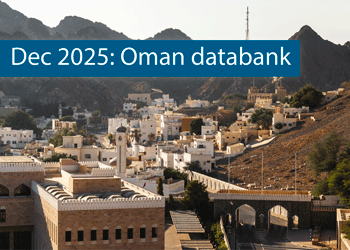 Oman’s growth forecast points upwards
Oman’s growth forecast points upwards24 December 2025
-
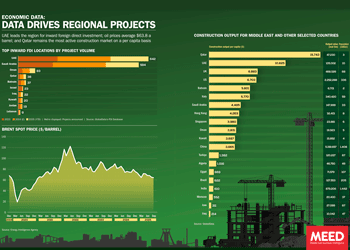 December 2025: Data drives regional projects
December 2025: Data drives regional projects23 December 2025
-
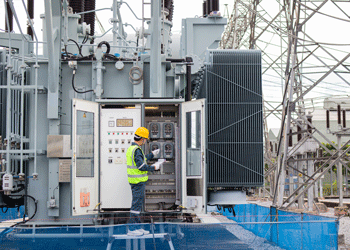 Local firm bids lowest for Kuwait substation deal
Local firm bids lowest for Kuwait substation deal22 December 2025
-
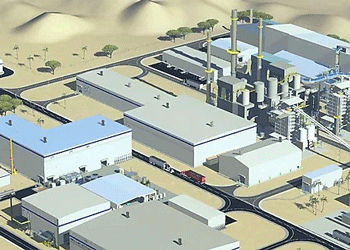 Saudi-Dutch JV awards ‘supercentre’ metals reclamation project
Saudi-Dutch JV awards ‘supercentre’ metals reclamation project22 December 2025
-
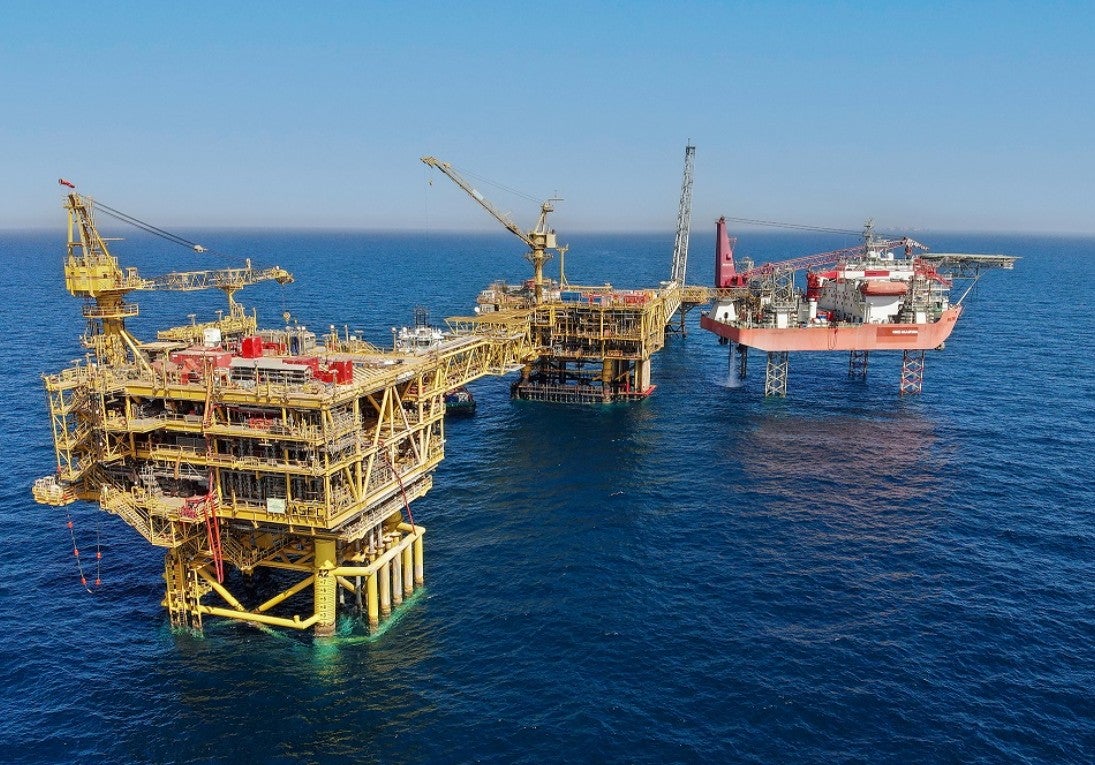 QatarEnergy LNG awards $4bn gas project package
QatarEnergy LNG awards $4bn gas project package22 December 2025
All of this is only 1% of what MEED.com has to offer
Subscribe now and unlock all the 153,671 articles on MEED.com
- All the latest news, data, and market intelligence across MENA at your fingerprints
- First-hand updates and inside information on projects, clients and competitors that matter to you
- 20 years' archive of information, data, and news for you to access at your convenience
- Strategize to succeed and minimise risks with timely analysis of current and future market trends

Related Articles
-
 Oman’s growth forecast points upwards
Oman’s growth forecast points upwards24 December 2025

MEED’s January 2026 report on Oman includes:
> COMMENT: Oman steadies growth with strategic restraint
> GVT & ECONOMY: Oman pursues diversification amid regional concerns
> BANKING: Oman banks feel impact of stronger economy
> OIL & GAS: LNG goals galvanise Oman’s oil and gas sector
> POWER & WATER: Oman prepares for a wave of IPP awards
> CONSTRUCTION: Momentum builds in construction sectorTo see previous issues of MEED Business Review, please click herehttps://image.digitalinsightresearch.in/uploads/NewsArticle/15306449/main.gif -
 December 2025: Data drives regional projects
December 2025: Data drives regional projects23 December 2025
Click here to download the PDF
Includes: Top inward FDI locations by project volume | Brent spot price | Construction output
MEED’s January 2026 report on Oman includes:
> COMMENT: Oman steadies growth with strategic restraint
> ECONOMY: Oman pursues diversification amid regional concerns
> BANKING: Oman banks feel impact of stronger economy
> OIL & GAS: LNG goals galvanise Oman’s oil and gas sector
> POWER & WATER: Oman prepares for a wave of IPP awards
> CONSTRUCTION: Momentum builds in construction sectorTo see previous issues of MEED Business Review, please click herehttps://image.digitalinsightresearch.in/uploads/NewsArticle/15306140/main.gif -
 Local firm bids lowest for Kuwait substation deal
Local firm bids lowest for Kuwait substation deal22 December 2025
The local Al-Ahleia Switchgear Company has submitted the lowest price of KD33.9m ($110.3m) for a contract to build a 400/132/11 kV substation at the South Surra township for Kuwait’s Public Authority for Housing Welfare (PAHW).
The bid was marginally lower than the two other offers of KD35.1m and KD35.5m submitted respectively by Saudi Arabia’s National Contracting Company (NCC) and India’s Larsen & Toubro.
PAHW is expected to take about three months to evaluate the prices before selecting the successful contractor.
The project is one of several transmission and distribution projects either out to bid or recently awarded by Kuwait’s main affordable housing client.
This year alone, it has awarded two contracts worth more than $100m for cable works at its 1Z, 2Z, 3Z and 4Z 400kV substations at Al-Istiqlal City, and two deals totalling just under $280m for the construction of seven 132/11kV substations in the same township.
Most recently, it has tendered two contracts to build seven 132/11kV main substations at its affordable housing project, west of Kuwait City. The bid deadline for the two deals covering the MS-01 through to MS-08 substations is 8 January.
https://image.digitalinsightresearch.in/uploads/NewsArticle/15305745/main.gif -
 Saudi-Dutch JV awards ‘supercentre’ metals reclamation project
Saudi-Dutch JV awards ‘supercentre’ metals reclamation project22 December 2025
The local Advanced Circular Materials Company (ACMC), a joint venture of the Netherlands-based Shell & AMG Recycling BV (SARBV) and local firm United Company for Industry (UCI), has awarded the engineering, procurement and construction (EPC) contract for the first phase of its $500m-plus metals reclamation complex in Jubail.
The contract, estimated to be worth in excess of $200m, was won by China TianChen Engineering Corporation (TCC), a subsidiary of China National Chemical Engineering Company (CNCEC), following the issue of the tender in July 2024.
Under the terms of the deal, TCC will process gasification ash generated at Saudi Aramco’s Jizan refining complex on the Red Sea coast to produce battery-grade vanadium oxide and vanadium electrolyte for vanadium redox flow batteries. AMG will provide the licensed technology required for the production process.
The works are the first of four planned phases at the catalyst and gasification ash recycling ‘Supercentre’, which is located at the PlasChem Park in Jubail Industrial City 2 alongside the Sadara integrated refining and petrochemical complex.
Phase 2 will expand the facility to process spent catalysts from heavy oil upgrading facilities to produce ferrovanadium for the steel industry and/or additional battery-grade vanadium oxide.
Phase 3 involves installing a manufacturing facility for residue-upgrading catalysts.
In the fourth phase, a vanadium electrolyte production plant will be developed.
The developers expect a total reduction of 3.6 million metric tonnes of carbon dioxide emissions a year when the four phases of the project are commissioned.
SARBV first announced its intention to build a metal reclamation and catalyst manufacturing facility in Saudi Arabia in November 2019. The kingdom’s Ministry of Investment, then known as the Saudi Arabian General Investment Authority (Sagia), supported the project.
In July 2022, SARBV and UCI signed the agreement to formalise their joint venture and build the proposed facility.
The project has received support from Saudi Aramco’s Namaat industrial investment programme. Aramco, at the time, also signed an agreement with the joint venture to offtake vanadium-bearing gasification ash from its Jizan refining complex.
Photo credit: SARBV
https://image.digitalinsightresearch.in/uploads/NewsArticle/15305326/main.gif -
 QatarEnergy LNG awards $4bn gas project package
QatarEnergy LNG awards $4bn gas project package22 December 2025
QatarEnergy LNG, a subsidiary of state-owned QatarEnergy, has awarded the main engineering, procurement, construction and installation (EPCI) contract for a major package for the second phase of its North Field Production Sustainability (NFPS) project.A consortium comprising the Italian contractor Saipem and state-owned China Offshore Oil Engineering Company (COOEC) has secured the EPCI contract for the COMP5 package. The contract value is $4bn, with Saipem declaring its share to be worth $3.1bn.
Milan-headquartered Saipem said the contract will run for about five years. The scope of work comprises engineering, procurement, fabrication and installation of two compression complexes, each including a compression platform, a living quarters platform, a flare platform supporting the gas combustion system, and the related interconnecting bridges. Each complex will have a total weight of about 68,000 tonnes.
Offshore installation operations will be carried out by Saipem’s De He construction vessel in 2029 and 2030.
MEED previously reported that the following contractors submitted bids for the NFPS phase two COMP5 package:
- Larsen & Toubro Energy Hydrocarbon (India)
- McDermott (US)
- Saipem/China Offshore Oil Engineering Company (Italy/China)
QatarEnergy LNG, formerly Qatargas, is said to have issued the tender for the NFPS phase two COMP5 package in the first quarter of the year.
Contractors submitted technical bids for the COMP5 package in late June, while commercial bids were submitted by 8 October, as per sources.
Based upon initial evaluation of bids by QatarEnergy LNG, L&TEH has emerged as the lowest bidder for the COMP5 package, followed by McDermott, with the consortium of Saipem and COOEC in third place, MEED reported in late October.
In the weeks following that, the project operator is said to have engaged all bidders for a final round of negotiations, during which the consortium of Saipem and COOEC is believed to have “clinched the deal”, according to sources.
The detailed scope of work on the COMP5 package covers the EPCI work on the following:
- Two gas compression platforms, each weighing 30,000-35,000 tonnes, plus jacket
- Two living quarters platforms, plus jacket
- Two gas flare platforms, plus jacket
- Brownfield modification work at two complexes
NFPS scheme
QatarEnergy’s North Field liquefied natural gas (LNG) expansion programme requires the state enterprise to pump large volumes of gas from the North Field offshore reserve to feed the three phases of the estimated $40bn-plus programme.
QatarEnergy has already invested billions of dollars in engineering, procurement and construction works on the two phases of the NFPS project, which aims to maintain steady gas feedstock for the North Field LNG expansion phases.
The second NFPS phase will mainly involve building gas compression facilities to sustain and gradually increase gas production from Qatar’s offshore North Field gas reserve over the long term.
Saipem has been the most successful contractor on the second NFPS phase, securing work worth a total of $8.5bn.
QatarEnergy LNG awarded Saipem a $4.5bn order in October 2022 to build and install gas compression facilities. The main scope of work on the package, which is known as EPCI 2, covers two large gas compression complexes that will comprise decks, jackets, topsides, interconnecting bridges, flare platforms, living quarters and interface modules.
The gas compression complexes – CP65 and CP75 – will weigh 62,000 tonnes and 63,000 tonnes, respectively, and will be the largest fixed steel jacket compression platforms ever built.
Following that, Saipem won combined packages COMP3A and COMP3B of the NFPS project’s second phase in September last year.
The scope of work on the combined packages encompasses the EPCI of a total of six platforms, approximately 100 kilometres (km) of corrosion resistance alloy rigid subsea pipelines of 28-inches and 24-inches diameter, 100km of subsea composite cables, 150km of fibre optic cables and several other subsea units.
Separately, QatarEnergy LNG awarded McDermott the contract for the NFPS second phase package known as EPCI 1, or COMP1, in July 2023. The scope of work on the estimated $1bn-plus contract is to install a subsea gas pipeline network at the North Field gas development.
In March this year, India’s Larsen & Toubro Energy Hydrocarbon (LTEH) won the main contract for the combined 4A and 4B package, which is the fourth package of the second phase of the NFPS project and is estimated to be valued at $4bn-$5bn.
The main scope of work on the package is the EPCI of two large gas compression systems that will be known as CP8S and CP4N, each weighing 25,000-35,000 tonnes. The contract scope also includes compression platforms, flare gas platforms and other associated structures.
LTHE sub-contracted detailed engineering and design works on the combined 4A and 4B package to French contractor Technip Energies.
NFPS first phase
Saipem is also executing the EPCI works on the entire first phase of the NFPS project, which consists of two main packages.
Through the first phase of the NFPS scheme, QatarEnergy LNG aims to increase the early gas field production capacity of the North Field offshore development to 110 million tonnes a year.
QatarEnergy LNG awarded Saipem the contract for the EPCI package in February 2021. The package is the larger of the two NFPS phase one packages and has a value of $1.7bn.
Saipem’s scope of work on the EPCI package encompasses building several offshore facilities for extracting and transporting natural gas, including platforms, supporting and connecting structures, subsea cables and anti-corrosion internally clad pipelines.
The scope of work also includes decommissioning a pipeline and other significant modifications to existing offshore facilities.
In addition, in April 2021, QatarEnergy LNG awarded Saipem two options for additional work within the EPCI package, worth about $350m.
QatarEnergy LNG awarded Saipem the second package of the NFPS phase one project, estimated to be worth $1bn, in March 2021.
Saipem’s scope of work on the package, which is known as EPCL, mainly covers installing three offshore export trunklines running almost 300km from their respective offshore platforms to the QatarEnergy LNG north and south plants located in Ras Laffan Industrial City.
Saipem performed the front-end engineering and design work on the main production package of the first phase of the NFPS as part of a $20m contract that it was awarded in January 2019. This provided a competitive advantage to the Italian contractor in its bid to win the package.
https://image.digitalinsightresearch.in/uploads/NewsArticle/15305330/main2239.jpg

